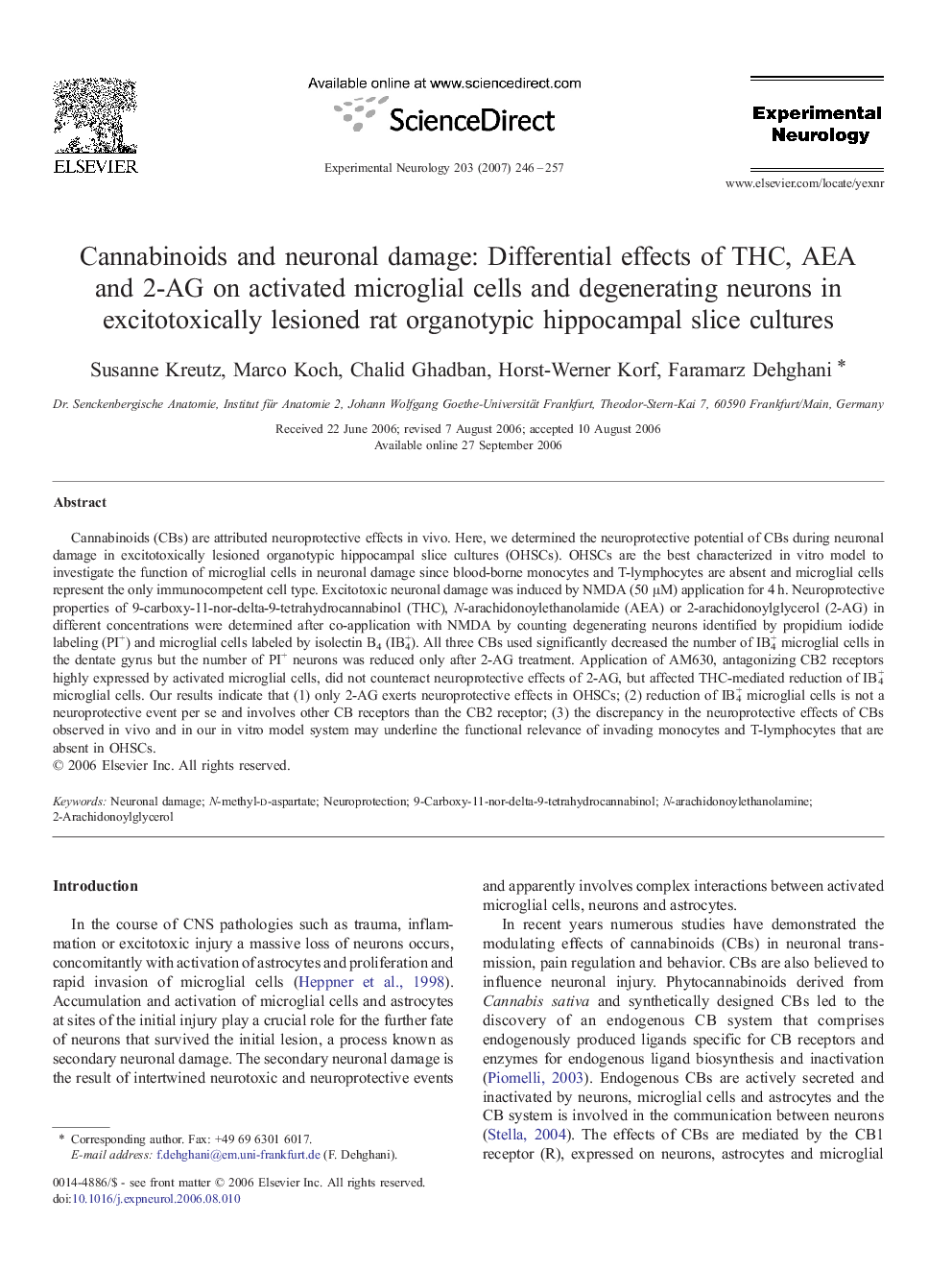| کد مقاله | کد نشریه | سال انتشار | مقاله انگلیسی | نسخه تمام متن |
|---|---|---|---|---|
| 3056955 | 1186583 | 2007 | 12 صفحه PDF | دانلود رایگان |

Cannabinoids (CBs) are attributed neuroprotective effects in vivo. Here, we determined the neuroprotective potential of CBs during neuronal damage in excitotoxically lesioned organotypic hippocampal slice cultures (OHSCs). OHSCs are the best characterized in vitro model to investigate the function of microglial cells in neuronal damage since blood-borne monocytes and T-lymphocytes are absent and microglial cells represent the only immunocompetent cell type. Excitotoxic neuronal damage was induced by NMDA (50 μM) application for 4 h. Neuroprotective properties of 9-carboxy-11-nor-delta-9-tetrahydrocannabinol (THC), N-arachidonoylethanolamide (AEA) or 2-arachidonoylglycerol (2-AG) in different concentrations were determined after co-application with NMDA by counting degenerating neurons identified by propidium iodide labeling (PI+) and microglial cells labeled by isolectin B4 (IB4+). All three CBs used significantly decreased the number of IB4+ microglial cells in the dentate gyrus but the number of PI+ neurons was reduced only after 2-AG treatment. Application of AM630, antagonizing CB2 receptors highly expressed by activated microglial cells, did not counteract neuroprotective effects of 2-AG, but affected THC-mediated reduction of IB4+ microglial cells. Our results indicate that (1) only 2-AG exerts neuroprotective effects in OHSCs; (2) reduction of IB4+ microglial cells is not a neuroprotective event per se and involves other CB receptors than the CB2 receptor; (3) the discrepancy in the neuroprotective effects of CBs observed in vivo and in our in vitro model system may underline the functional relevance of invading monocytes and T-lymphocytes that are absent in OHSCs.
Journal: Experimental Neurology - Volume 203, Issue 1, January 2007, Pages 246–257